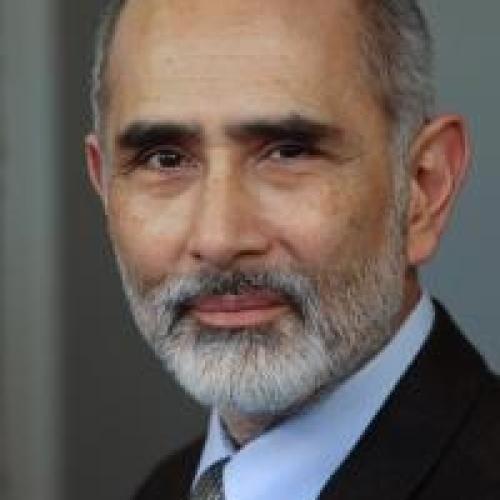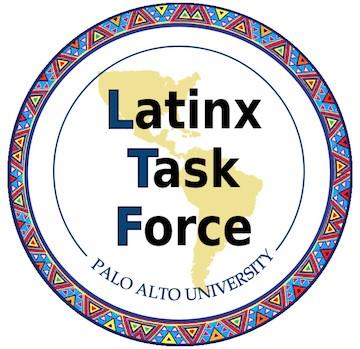
Palo Alto University Earns Designation as Hispanic Serving Institution (HSI)
We are proud to announce that Palo Alto University (PAU) has met the criteria as a Hispanic Serving Institution (HSI) by the U.S. Department of Education. This designation will allow PAU to apply for grants that may fund training, programs, and infrastructures that support Latinx students, such as educational materials, academic tutoring and counseling, endowments and scholarships, faculty and administrative development, distance learning academic instruction, and renovation of instructional facilities. The HSI designation is one of four that comprise Minority Serving Institutions (MSI) in the nation.


How did PAU Qualify for the HSI Designation?
PAU has a long history of creating programs that support Latinx students. The first organization to focus on Latinx issues was the Palo Alto University Latino Student Organization (PULSO), a student-led group that started more than ten years ago initially sponsored by faculty member Alinne Barrera, PhD.
In 2014, Clínica Latina was instituted within the Gronowksi Center, PAU’s community clinic and training center for second-year doctoral students. James Breckenridge, PhD, Vice President for Institutional Effectiveness, Analysis & Planning, in collaboration with Sandy Macias, PhD, Director of the Gronowski Center, launched Clínica Latina to train Spanish-speaking doctoral students to offer therapy in Spanish.

Under the leadership of Clínica Latina’s founding director Elisabet Revilla, PhD, as well as clinical supervision from Martha Hernandez, PhD, PAU trains 12 to 13 Spanish-speaking doctoral students per year, which is more than the total number of clinical psychology doctoral students accepted each year by many universities in the U.S.
In 2017, a UNITY grant awarded by PAU President Maureen O’Connor led to the creation of the Latinx Task Force (LTF), in response to an application by roughly 50 faculty, staff, and students. Among its many accomplishments, the LTF has sponsored a course taught entirely in Spanish—the Spanish for Clinicians Course. This class is offered by Dr. Hernandez and is open to graduate students at PAU.

Since 2017, a key objective of the LTF was to earn the HSI designation for PAU, and this has been a bumpy road. To be eligible to apply for the designation, PAU needed full-time undergraduate enrollments of at least 25 percent Hispanic students for two consecutive years. Only 17 percent of nonprofit colleges and universities in the U.S. meet this criterion. To reach this enrollment goal, the LTF created the Latinx Merit Scholarships to encourage students at community colleges to transfer to PAU for their junior and senior years of undergraduate studies. Due to the generosity of an anonymous donor along with additional funds allocated by President O’Connor, PAU was able to offer $100,000 in scholarships, resulting in PAU successfully meeting the 25-percent enrollment goal.
The journey hit another bump in 2021 when the application deadline to apply for the HSI designation was changed and PAU missed the deadline. Provost Erika Cameron stepped in and, with the help of Jennifer Lehner, Director of Institutional Research, PAU was able to submit the application successfully, leading to receiving the designation for 2022.
What does PAU Plan to Do with the HSI Designation?
Even though the HSI designation is a great achievement for PAU, more work lies ahead. The next steps involve researching and applying for HSI-specific grants, and creating programs that will best recruit and support Latinx students at PAU.
“It’s not enough to just have this HSI designation,” says Dr. Muñoz. “We must ask ourselves, ‘What does it mean to be a Hispanic-serving institution? What should be our priorities when we are applying for grant funds? How can we better serve our Latinx students and community?’”
To answer these questions, Dr. Muñoz cites six indicators* of an institution that is successfully supporting Hispanic students and how PAU could address each one:
- Enrollment – PAU must maintain undergraduate enrollment of at least 25 percent Hispanic students to earn the HSI designation each year, therefore recruitment efforts of Latinx prospective students must continue.
- Graduation – The college dropout rate for Hispanic students is very high in the U.S., so it’s important to not only recruit Latinx students but also to support them through graduation.
- Employment – PAU must offer coursework, internships, and guidance to help Latinx students obtain gainful employment after graduation.
- Community Engagement – To reach out to and support Latinx and other underrepresented students at local high schools and community colleges and encourage them to continue their education and consider doing so at PAU.
- Positive Campus Climate – To establish an organizational identity at PAU that supports and enhances the student experience for Latinx and other underrepresented students.
- Support Services and Programs – Offering services and programs that meet the specific needs of Latinx and other underrepresented students for academic and employment success.
“To be a Hispanic serving institution, we need to diversify our faculty and curriculum to be more representative of the students we seek to serve,” says Lapido, referring to creating a positive campus climate for Latinx students. “We need to ask such questions as, ‘What do our textbooks look like? What does our faculty look like? What picture are we painting of what a mental health professional looks like?’”
Dr. Muñoz recommends applying for HSI-eligible grant money to set up a mentoring pipeline to engage the community, recruit Latinx students to PAU, and support their academic success. In this program, Latinx students in local high schools, community colleges, and in PAU’s undergraduate, master’s, and doctoral programs would receive mentoring from PAU students and graduates. Many Latinx high school students may not think it’s possible for them to go to college since their family members did not attend, however, this pipeline could provide role models for them to pursue higher education. Dr. Muñoz proposes applying for HSI grant money to provide stipends for both PAU student-mentors and their mentees.
“This is just the beginning,” says Dr. Muñoz. “Now that we have the designation, we need to live up to it and bring more Latinx and other minoritized students into the field of psychology, so they can better serve their communities. One of the beauties of working at PAU is that we don’t just add ‘Women and Minorities are Encouraged to Apply’ to our documents in small font. We really mean it.”
*The six indicators of an HSI can be found in the article “Defined by Outcomes or Culture? Constructing an Organizational Identity for Hispanic-Serving Institutions” by Gina A. Garcia, PhD, Associate Professor, University of Pittsburgh School of Education.
